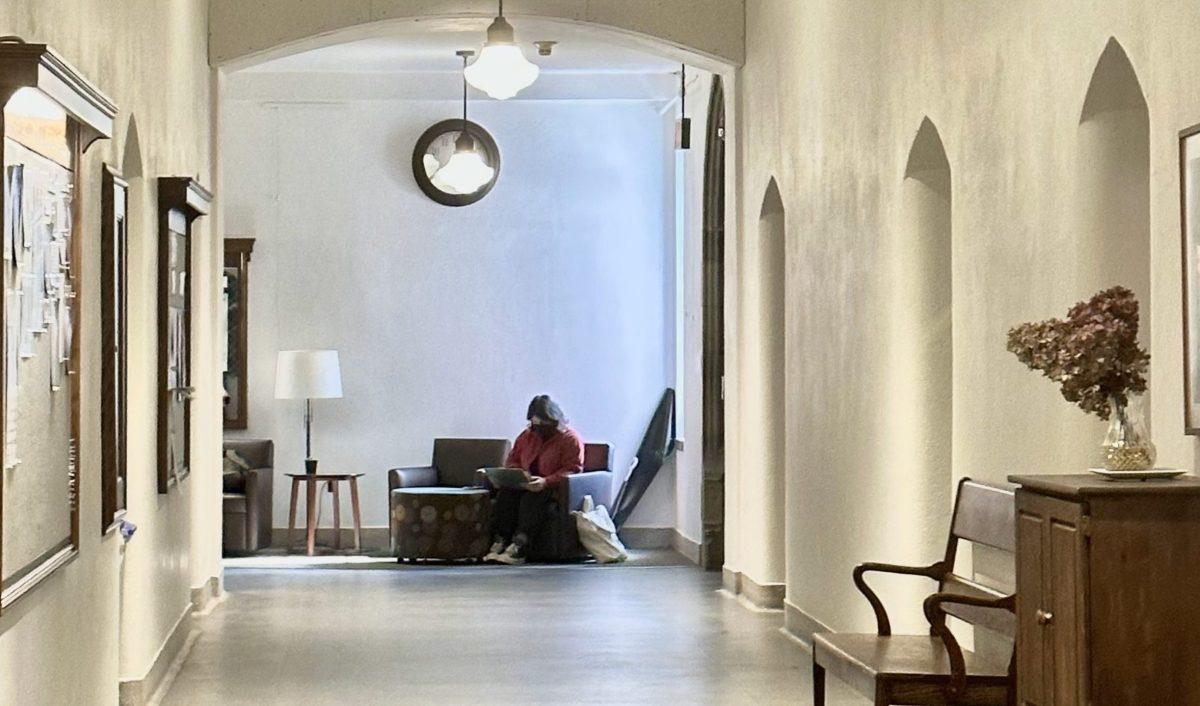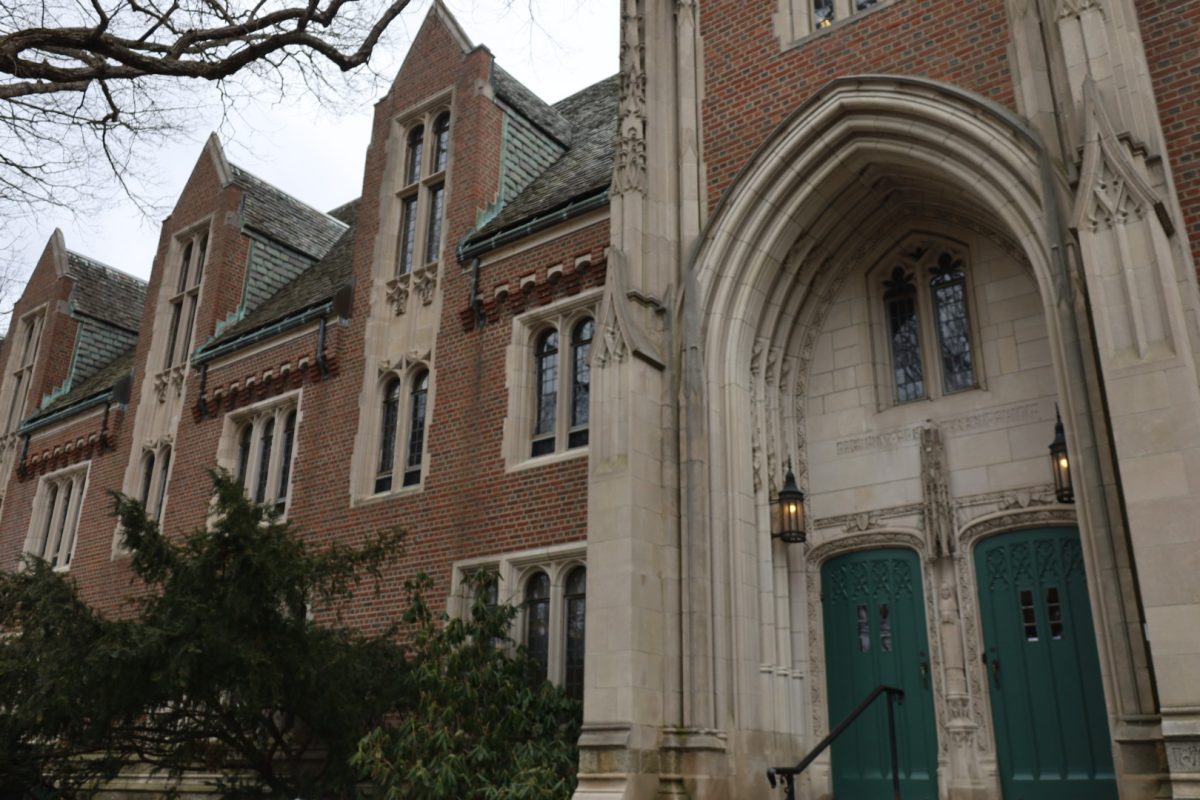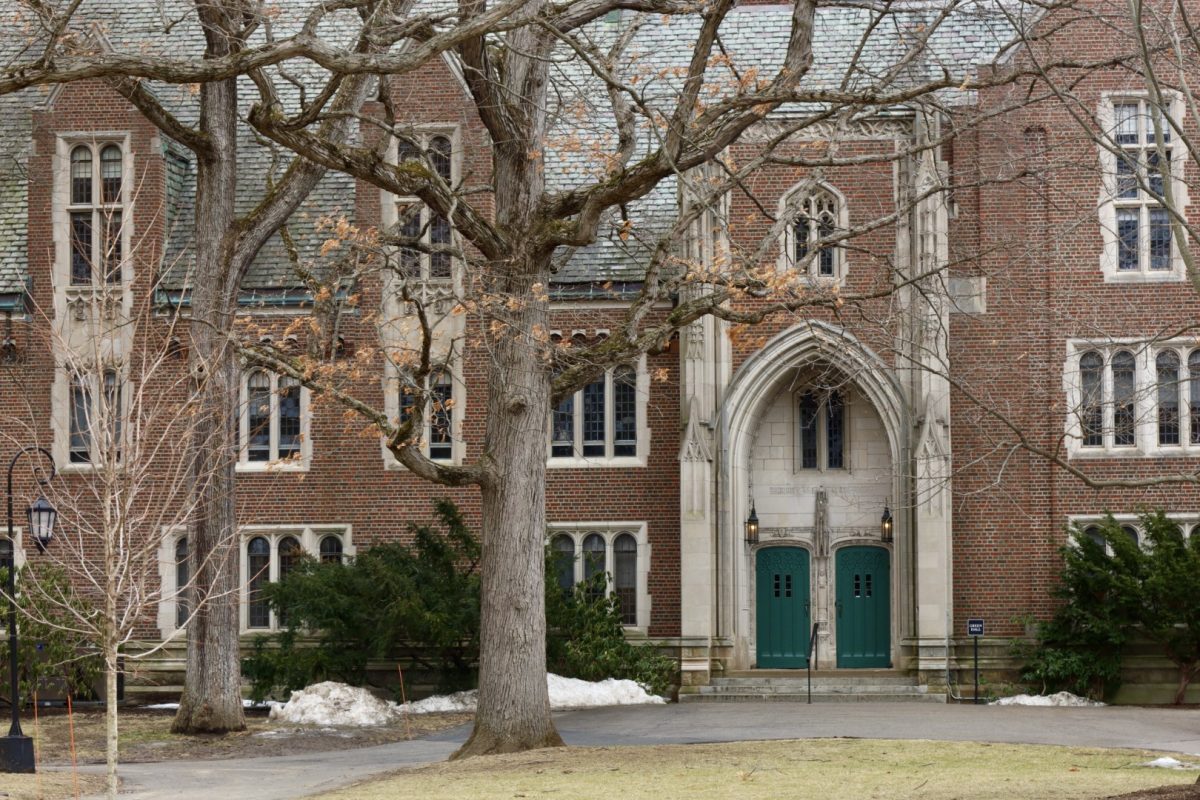Following the conclusion of the summer construction project on Founders Hall, staff members returned to the building Labor Day weekend to discover classrooms and offices cluttered with debris.
“There were rather disturbing amounts of dust … and other kinds of debris all over the place, particularly on shelves and in books,” Chair of the English department Prof. Yoon Lee said.
This was largely due to a mishap during construction when a tarp meant to block off parts of a first-floor office fell down.
“[The workers] had removed books from half the office, and then they put up a plastic tarp or drop cloth to block off the other half of the office. Unfortunately, that drop cloth was hanging down from the ceiling, so there was concern regarding not only the section where the books have been removed, but the section that was supposed to have been blocked off … It was alarming,” English Prof. Yu Jin Ko said.
In a Zoom meeting between the English department and administrators, Ko demonstrated the buildup of debris on his windowsill.
“I took my finger over the shelves, and used a piece of paper, and gray smudges came off very, very visible … but I think the people doing the cleaning just didn’t have the time. They were under such a rush that they couldn’t do the cleaning that was promised,” Ko said.
Since the construction started on the fourth floor and progressed downward, it was primarily first-floor rooms and the basement that remained partially uncleaned. At sight of this, Lee and other English faculty contacted administration, requesting a professional cleaning. Before the cleaning occurred, Ko used a lead testing kit in Founders on Sept. 7.
“I was worried … because it was clearly construction dust … There was a combination of things that were worked on [during construction] … that clearly had old paint on it, and the windows had asbestos on the outside of [it], so I decided to test the dust for lead,” Ko said.
The test revealed there was lead present in the areas swabbed. Ko knew his results were preliminary and did not definitively communicate whether the lead levels were sufficiently dangerous. Still, he had conducted the test because much of the first-floor faculty and staff wanted more information.
“We also learned in a meeting … that lead testing was not part of their [the administration’s] original plan. They were not planning to do it at all,” Lee said. “[This] has been an ongoing source of tension with our department that we have to consistently just keep asking and asking for information and feel as though it is not really being given to us.”
According to the Office of Media Relations, Environmental Health and Engineering (EH&E), the environmental consultant company Wellesley hired to conduct representative air and surface lead testing in the building, published its full report on Oct. 3. It concluded that indoor lead conditions in Founders do not pose a health risk, largely based on detection of no lead in the air.
“This is important because airborne lead is the primary pathway for exposure to lead in workplaces,” EH&E stated in the report.
Regarding surface lead levels, the report relayed an average level of surface lead of 120 mg/ft2 and, comparing it to a 1,000 mg/ft2 limit for “commercial buildings” recommended by an isolated study from 2001, determined it nonthreatening.
However, four outlier measurements (out of 50 total data points) were well above 1,000 mg/ft2, ranging from 2,430 to 6,130 mg/ft2. Furthermore, Prof. Dan Brabander of the Geoscience department said this benchmark was based off of the CDC’s acceptable limit for blood lead concentration at the time of the study – and that this figure has been lowered considerably since 2001.
“Since then … the CDC has lowered twice the amount that is acceptable in lead before it’s considered poisoning … [and] it’s worth noting that the World Health Organization also has a very strong statement that articulates that no lead exposure has been shown to be safe,” he said.
The variation in these limits, Brabander explained, are partially due to the difference between the amount of lead likely to be ingested and amount of lead which becomes biochemically available – i.e. that actually enters the bloodstream. He emphasizes that there are many factors that affect how lead incorporates itself into the bloodstream, which makes risk difficult to evaluate. This is why Brabander finds the implications of the EH&E’s data to be much more complicated than what is presented in the report’s executive summary.
“Understanding exposure risks … goes beyond just the concentrations that are recorded in a document. One also has to take into account behaviors that might minimize [or] potentially increase incident exposures to that,” Brabander said.
Furthermore, Brabander notes that the small sample size of this study, though understandable in practice, makes it difficult to know how extraneous these outliers truly are.
“When you have a small sample size … whether you choose a 95th percentile or a 90th percentile [has] much bigger ramifications in terms of your risk modeling. This was particularly exacerbated in this case with several samples that were … 10 to 100 times higher than some of the other samples… [In these cases] it becomes necessary to make assumptions about what is representative. And that’s where I have some differences of opinion in terms of the choices that were made.”
Meanwhile, professors have been making their own decisions about how to operate under these uncertainties.
“I’m not confident that the building is safe. Any lead dust on the surfaces could become airborne if hit with a gust of wind and then easily inhaled … [so] I am teaching outside in the tent and holding office hours there as well,” English Prof. Susan Meyer said.
Students, too, underscore the desire for better communication.
“I don’t know how much of a risk [the lead] was to us or our class. I really would like to know more because it is definitely something that impacts people’s health. I think always just honesty … having some kind of an announcement of why and what exactly was going on would be nice,” Hadley Roberts‘27 said.
Moreover, faculty emphasize that lead is not the only issue. High humidity and water leakage – potentially a result of windows left open during and after construction – have created other problems.
“Books were wet to the touch and many of them had … significant mildew … There was also mildew all over the furniture in the English common room,” Lee said of her encounter with the building on Sept. 4, prior to the start of the semester. Without a clean common room, the department has still been unable to host their usual “Welcome Back” events for majors and prospective students.
Water damage, too, has infiltrated some rooms – most severely affecting English department administrator Lisa Easley’s office, who has been working remotely as a result since the start of the semester. The cause of this is unclear, though the English faculty noted upon their arrival that their windows had been left open.
“We don’t know when [the windows] were open,” Lee said, though she hypothesizes it was early-to-mid summer when the construction company was doing asbestos removal. “We later learned that the hardware had broken on these windows, when they were opening them.”
Another potential cause of the damage is humidity. An employee from a company hired to clean the damaged books (after the English faculty’s initial communication with admin) showed Lee that his humidity meter, when placed on the desk in her classroom, read 71%.
“The books were all just getting wet from the air. Everything was feeling wet,” she said.
They have since received air filters and dehumidifiers, which have improved conditions. But Lee expresses her concern that, with climate change, things will only get worse – perhaps far beyond the capacity of an old building like Founders.
“The question that I would like to know is: why is there no plan to renovate Founders when … the building … as it currently exists, is not able to meet the changing climate?”




